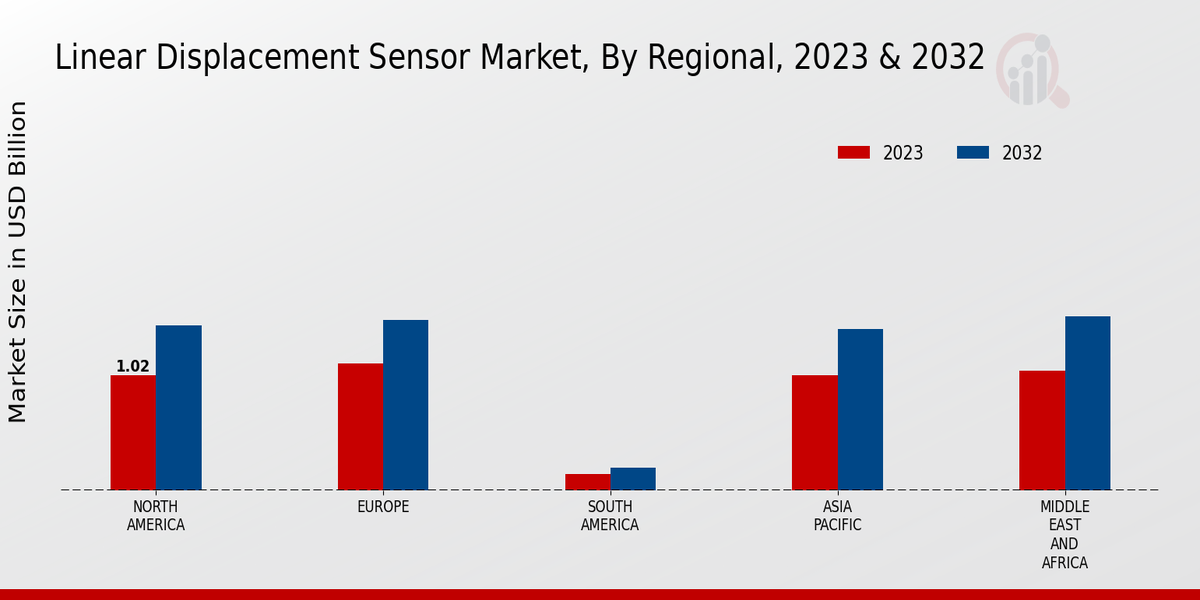Market Growth Projections
The Global Linear Displacement Sensor Market Industry is projected to experience substantial growth over the coming years. With a market value of 3.8 USD Billion anticipated in 2024, the industry is set to expand significantly, reaching an estimated 6.07 USD Billion by 2035. This growth trajectory suggests a compound annual growth rate of 4.34% from 2025 to 2035, indicating a robust demand for linear displacement sensors across various sectors. The increasing reliance on automation, precision measurement, and technological advancements are key factors driving this growth. As industries evolve, the market for linear displacement sensors is expected to adapt and flourish, reflecting the dynamic nature of technological progress.
Technological Advancements
The Global Linear Displacement Sensor Market Industry is witnessing rapid technological advancements that enhance measurement accuracy and reliability. Innovations in sensor technology, such as the development of laser-based and capacitive sensors, are contributing to improved performance metrics. For instance, laser displacement sensors provide non-contact measurement capabilities, which are increasingly preferred in precision applications. As industries seek to optimize processes, the demand for these advanced sensors is expected to rise significantly. This trend is likely to drive the market's growth, with projections indicating a market value of 3.8 USD Billion in 2024, reflecting the industry's shift towards more sophisticated measurement solutions.
Growing Automation in Industries
The Global Linear Displacement Sensor Market Industry is significantly influenced by the increasing automation across various sectors, including manufacturing, automotive, and aerospace. Automation enhances operational efficiency and precision, necessitating the use of reliable measurement tools like linear displacement sensors. For example, in the automotive sector, these sensors are integral to robotic assembly lines, ensuring accurate positioning and movement. As industries continue to adopt automation technologies, the demand for linear displacement sensors is expected to grow, contributing to a projected market value of 6.07 USD Billion by 2035. This trend underscores the critical role of sensors in modern industrial applications.
Expansion of Manufacturing Sector
The Global Linear Displacement Sensor Market Industry is benefiting from the expansion of the manufacturing sector, particularly in emerging economies. As countries invest in infrastructure and industrial development, the demand for linear displacement sensors is expected to rise. These sensors play a crucial role in various manufacturing processes, including quality control and automation. For example, in countries like India and China, the rapid growth of manufacturing capabilities is driving the adoption of advanced measurement technologies. This trend is anticipated to contribute to the overall market growth, aligning with the projected increase in market value to 6.07 USD Billion by 2035, as manufacturing continues to evolve.
Rising Demand for Precision Measurement
The Global Linear Displacement Sensor Market Industry is experiencing a surge in demand for precision measurement solutions across various applications. Industries such as aerospace and medical devices require high accuracy in measurements to ensure safety and compliance with stringent regulations. Linear displacement sensors provide the necessary precision, making them indispensable in these sectors. For instance, in aerospace, these sensors are used for monitoring critical components, thereby enhancing safety and performance. The growing emphasis on quality and precision is likely to propel the market forward, with a projected compound annual growth rate of 4.34% from 2025 to 2035, reflecting the increasing reliance on accurate measurement technologies.
Increased Focus on Research and Development
The Global Linear Displacement Sensor Market Industry is also influenced by an increased focus on research and development within the sensor technology field. Companies are investing in R&D to innovate and improve sensor capabilities, which is essential for meeting the evolving needs of various industries. For instance, advancements in materials and design are leading to the creation of more robust and versatile sensors. This focus on innovation is likely to enhance the competitive landscape of the market, driving growth and adoption rates. As R&D efforts continue to expand, the market is expected to see significant advancements, further solidifying the role of linear displacement sensors in diverse applications.















Leave a Comment